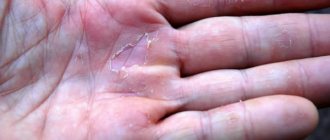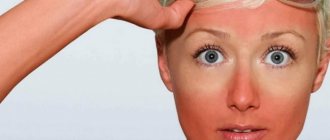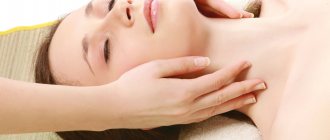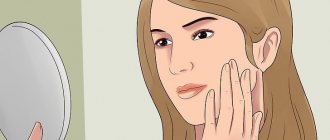“Everything is in our hands, so they must be in perfect order,” Coco Chanel.
During the pandemic, we are acquiring new habits related to caring for our hands.
What you should pay attention to first of all is told by the expert of the news portal “BelNovosti”, facial gymnastics coach Marina Lanskaya.
Why does the skin of your hands age faster?
— The skin of your hands quickly becomes dehydrated, because it contains five times less water than the skin of your face. The skin of the hands lacks sebaceous glands, so without proper care it peels and cracks. Hands age quickly due to loss of moisture in the dermis, the reason for which is that you do not dry your hands after washing.
The moisture that naturally evaporates from the skin is not only the cause of dryness, but also the best environment for the growth of bacteria. Dry skin on your hands ages them faster than time.
How to make your hands look younger, the main signs of aging hands and ways to combat them.
What gives away a woman’s age is, of course, her hands. Throughout life, hands constantly come into contact with water. They wash, wash, bathe children. They are exposed to detergents, which also negatively affects the skin. And my hands get old.
The first sign of aging hands is age spots
When pigment spots are visible on the hands, it is immediately obvious that the hands are senile. What are pigment spots? They are accumulations of melanin. Under the influence of sunlight, melanin accumulates in human skin.
And, if at a young age it is distributed evenly under the skin, then with age, with a slowdown in metabolism, accumulations form in the form of dark spots in certain places.
You can wear gloves to prevent ultraviolet rays from touching the skin of your hands, but this is somehow not accepted. Therefore, you need to use sunscreen. And not only when you are on the beach, when you just leave the house.
But what to do if spots have already appeared? You need to bleach them, lubricate your hands with a special cream that contains 2% hydroquinone. Hydroquinone, acting on melatonin accumulations, will destroy it. The skin will renew itself and, gradually, the spots will disappear.
Wrinkles are the second sign of aging hands
To have fewer wrinkles, you need to drink enough water and keep it in the skin longer. After all, if the air is dry, for example in winter in a room with central heating, it takes water from the environment. The water in the vessels evaporates, the human skin dries out.
To prevent water loss from the skin, you need to use a moisturizer. The effect will be more noticeable if you smear your hands in the evening before going to bed and wear cotton gloves. Overnight, water molecules will penetrate from the cream into the skin. The liquid will increase its volume. The skin will smooth out and wrinkles will disappear.
The third sign of aging hands is pronounced veins
Varicose veins affect not only the legs, but also the arms. To prevent this disease, you need to monitor vascular tone, train muscles, and engage in physical exercise from a young age. When the muscles are actively working, blood stagnation does not occur and the veins do not dilate.
How to fight when all the veins are already visible?
You can go to a medical facility and use fillers to fill the subcutaneous layer of your hands with liquid. The volume of the skin will increase and the veins will not be visible.
Or you can use a budget option - simply disguise the veins with foundation.
Folk remedies to combat aging hands
Hand skin masks are a very effective means of rejuvenation. All ingredients can always be found in any kitchen. Here, for example, is a scrub mask for the skin of the hands. Take the following products:
- 2 tbsp. spoons of sea or regular table salt;
- 2 tbsp. spoons of baking soda;
- 3 tbsp. spoons of foam for washing or gentle liquid soap.
Mix everything thoroughly. The result should be a mixture whose thickness resembles non-liquid sour cream. You need to apply the mask to your hands on both sides. Massage, without pressing too much, each finger, as well as the inside of the palm. After 10-15 minutes, rinse and apply moisturizer. You need to make a scrub mask once a week. After regular use, even age spots will be less noticeable. You want your hands to look younger. Use these tips and also include eggs, peanuts and almonds in your diet. They contain vitamin B7, which is very beneficial for the skin of the hands and nails.
How to prevent hand aging?
— If you wear gloves made of natural materials, the skin of your hands will breathe, while in rubber gloves it does not breathe and loses moisture.
Use baby powder after washing and drying your hands. It will perfectly absorb the remaining secretions that get on the skin, soothe it, and will not block the skin’s breathing. Powders usually contain agents that have antiseptic properties, moisturizing and anti-inflammatory components.
Aging hand skin: recommendations to help prevent premature aging
- moisturize and nourish the skin of your hands regularly with creams
From the fingers to the shoulders. Use special moisturizing hand creams for these purposes and add a few drops of base or essential oils to them; these can also be oil solutions of vitamins E, A;
- Exfoliate your hands twice a week.
Recipe: Take 1 tsp. ground coffee or sugar and add a little shower gel or face wash. Then rub the mixture thoroughly over your hands and rinse off with warm water. After peeling, be sure to moisturize them with cream. You will immediately feel the effect - your hands will become soft and smooth.
- In winter, be sure to wear gloves, and in summer, protect your hands with creams with UVA filters.
Also take note of an effective way to well moisturize and nourish your hands, make them softer and more tender after the first “session”: at night, apply a nourishing cream to your hands in a thick layer and put on cotton gloves (you can find them in any cosmetic store). In the morning, when you take off your gloves, the redness will subside, your hands will be smoother, and your skin will be softer and smoother;
- in older age, use antioxidant products that restore the skin of your hands.
Their composition must include elastin, collagen and vitamins A, B and E;
Oil massage
The best way to avoid dry hands is a daily oil massage. This may only take a couple of minutes, but will help your hands stay well-groomed.
Massage your hands with olive oil, to which you add 1 drop each of avocado or almond oil, or apricot kernel oil.
I can’t ignore tea tree oil, a natural antibiotic that helps remove fungus, has a wound healing effect and improves the tone of the dermis. 1 drop into your favorite hand cream will improve the effect of your hand care procedure.
Use almond and corn oil - they have proven themselves as oils that protect, moisturize, nourish and smooth the epidermis.
Three prohibitions
- Wash your hands with too hot water. Our skin is covered with a hydrolipid mantle that protects it from drying out, viruses and bacteria. Hot water washes away natural protection.
- Use antibacterial soap and wipes daily. Both dry out the skin. Therefore, after using such products, be sure to apply a moisturizing or nourishing cream to your hands.
- Do not dry your hands after contact with water. Droplets of water, evaporating, further dry out the skin.
Hand exercises
Movable hands are the key to an active human mind. If you add exercises and techniques to your massage to develop fine motor skills, you will significantly improve your memory and flexibility of thinking.
The science of psychosomatics considers the skin as something that protects our individuality and our feelings, so we can assume that by caring for the skin of our hands, face and body, we thus protect our individuality and our feelings.
Skin care products are selected individually, so general, but nonetheless effective advice is given. Love yourself, take care of yourself, think positive thoughts, and beauty will not keep you waiting.
Photo: Pixabay
Rule #1. Gloves on your hands!
The coronavirus has already taught Russians to wash their hands frequently, but not all of us know that this procedure should be spent at least 20 seconds, thoroughly washing away the dirt from under the nails and between the fingers. Unfortunately, the struggle for cleanliness has a downside - dry hand skin, which can lead to eczema (dermatitis), and treating it is still a pleasure! What to do? First, understand that in the current conditions the main thing is not to aggravate the problem, so all household chores must be done using gloves. There cannot be two opinions here - all chemical products contain surfactants or aggressive alkalis, which subsequently have a very negative impact on the condition of the skin. Staying in contact with these products for a long time will cause your hands to become even rougher and dryer. And this, in turn, will lead to the appearance of wrinkles and pigmentation. So urgently put this “accessory” into use.
Women often complain that they experience discomfort when doing household chores wearing gloves. Yes, at first it is unusual. But I assure you that in a maximum of 5 days everything will pass, and you will no longer be able to do without them.

Mission "Save Granny". How to turn self-isolation into fun for children Read more
Rule #2. The right soap
Choose hand soaps that do not contain large amounts of lye. Now many people have begun to use products with antibacterial components. But here it is important to understand: the main thing in the matter of hygiene is not the type of soap, but how thoroughly you wash your hands. It is not necessary to switch to products that kill all bacteria. You can use, for example, a fairly mild liquid soap, which, in addition to feeling clean, will also take care of the skin of your hands.
As for antiseptics, opt for options that also contain moisturizing ingredients, such as aloe. They are much more gentle on the skin.

"We work for you." Doctors and volunteers talk about the fight against COVID-19 Read more
Age spots on the skin of the hands
A professor of dermatology at the University of South Carolina explains that age spots on the hands are actually sun marks. Even if you don't spend most of your time in the sun or tan at all, these spots are an indicator of many years of exposure to the sun's rays. Just compare the skin on the outside and inside of the hand - the skin on both sides is the same age!
If your age spots have recently appeared, dermatologists recommend using lightening creams, such as those containing licorice or soy. The whitening ingredient hydroquinone is especially good. This will help reduce the brightness of the spots on your hands. Or try stronger ingredients like tretinoin, which contains powerful ingredients like Retin-A and Renova.
More drastic solutions to lighten age spots on the hands are treatments such as laser, chemical peels or liquid nitrogen spray. Just remember that the skin takes longer to heal after these procedures than the skin on the face.
To prevent age spots from appearing on your hands, always use sunscreen before going outside, regardless of whether the weather is sunny or not (as ultraviolet light penetrates through clouds). Choose skin sunscreens that offer broad spectrum UVA protection - these rays are responsible for the production of melanin, which colors the skin.
Why is pain in the arm dangerous after a fracture?
If there are symptoms of a fracture of the arm bones - severe pain, unnatural arrangement of parts of the limb, their mobility, the appearance of a crunch when pressing on the injured area, the presence of a wound, visible bone fragments, the appearance of swelling - urgent medical attention is needed. The time for complete restoration of bone and other tissues after a fracture is two months. The appearance of pain in the injured arm during this period and after this period may indicate the development of pathological processes.
If the arm bones do not heal properly, numerous complications can occur. Pain in the arm after a fracture and decreased functionality of the limb are very common phenomena. They are the result of improper fusion of bone fragments, damage to nerve fibers, muscles, blood vessels, and joint tissues. Pain in a broken arm is often caused by poor-quality rehabilitation therapy and insufficient self-development of the limb.
How much the arm hurts after a fracture of the radius, forearm or joints depends on the age of the victim, the presence of systemic diseases, and metabolic disorders in the body. The timeliness of assistance and the professionalism of doctors are important factors influencing the appearance and stable persistence of pain in the arm after a fracture.
Found an error? Select it and press Ctrl+Enter.
Causes
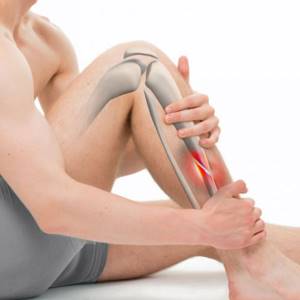
Fractures occur as a result of intense direct or indirect impact that exceeds the strength of the injured bones. It is observed in patients who have suffered severe blows, falls, car accidents, or workplace emergencies. Depending on the mechanism of injury, certain types of fractures are distinguished.
- traumatic injuries are observed when falling from a great height, strong impacts
- pathological - observed even with minor impacts: small blows, a fall from a height no higher than the victim’s height, excessive tension in muscle tissue, poor body position
Depending on whether there is contact between the site of injury and the environment, fractures can be open or closed. With intra-articular fractures, damage to the articular surface, rupture of ligaments and articular capsule are observed. May be combined with dislocations or subluxations. When selecting an appropriate treatment regimen, the doctor takes into account the cause of the injury, its type and level of injury.
Pain syndrome occurs in patients after receiving a traumatic injury, as well as while wearing a cast and after its removal. The level of pain depends on the degree of traumatic injury and the individual characteristics of the patient’s body.
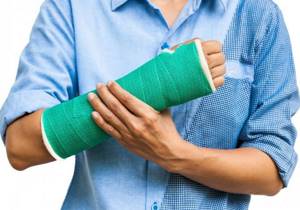
Pain may increase in patients while wearing a plaster cast. This manifestation is due to:
- By squeezing the plaster cast. A similar phenomenon is often observed when applying plaster during periods of acute pain.
- An inflammatory reaction develops, and circulatory disorders are observed. Soft tissues swell.
- The affected area of the body or limb increases in volume, which leads to compression of the damaged area.
In this case, it is recommended to remove the plaster cast as soon as possible, provide first aid and then reapply the plaster. Lack of timely assistance is fraught with functional disorders, loss of sensitivity or chronic pain syndrome. If the bandage is applied incorrectly or carelessly, bedsores form and complaints of pain at the site of the lesion occur.
Uneven application of plaster leads to the formation of tuberosity. The skin becomes red, the patient complains of tightness and an unpleasant odor. Severe pain occurs, and sensitivity may also be partially or completely impaired. The pain may be accompanied by an allergy to gypsum materials. This manifests itself in the form of redness, itching, and swelling.
Patients experience pain after removing the plaster cast. To prevent such a symptom, it is recommended to gradually increase physical activity and work out the affected joints of the body, arms and legs. Pain after removing a plaster cast is often observed when damaged bones do not heal properly. The limb is in a stationary, compressed position for a long time. This leads to disruption of microcirculation, slowing down blood flow through the vessels.
After the cast is removed, it is recommended to closely monitor the affected areas. Circulatory disorders may be accompanied by pain, sensory disturbances, and swelling. To reduce pain, swelling, and circulatory problems after removing the cast, they use physiotherapy (magnetic therapy), do a course of relaxing massage, and gradually introduce elements of physical therapy. Electrophoresis with painkillers and anti-inflammatory drugs is indicated.
Doctors recommend local application of ointments, creams and gels with analgesic, anti-inflammatory, and decongestant properties. If after removing the bandage the pain does not decrease, medications with anti-inflammatory and analgesic effects are prescribed in the form of tablets and capsules for internal use. If conservative therapy does not help, it is recommended to consult your doctor again.
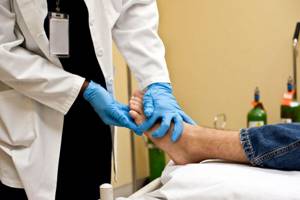
Old fractures include fractures that occurred more than 30 days ago. With an old fracture, patients are bothered by a dull, aching pain, which intensifies with traumatic injuries or changes in weather. Poor quality therapy provokes the development of pathological processes and dystrophic changes in the joints. With proper treatment of extensive fractures, adhesions in the musculo-ligamentous apparatus do not form in most cases.
The patient himself may underestimate the seriousness of such a disorder and overexert the damaged areas of the torso or limbs. This provokes complications, including re-fracture. It is recommended to protect the affected areas from excessive physical exertion and hypothermia, and to follow all the recommendations of the attending physician.
When treating old fractures, medications with analgesic and anti-inflammatory properties, as well as physiotherapy, are used. If conservative treatment is ineffective, metal osteosynthesis and joint replacement are recommended. Modern methods of surgical therapy allow you to quickly return to your normal lifestyle and improve its quality.
Possible complications
Late complications of fractures include incorrectly or delayed healing of fragments. Pseudarthrosis may occur, and sometimes there is no fusion. Intra-articular and periarticular fractures are fraught with post-traumatic arthrosis. The formation of contractures is observed with any type of violation of the integrity of bone tissue: both extra- and intra-articular. It occurs due to prolonged immobilization of the limb, as well as due to improper fusion.
With multiple fractures, which are combined with other injuries, there is a possibility of developing:
- shock
- fat embolism
- traumatic toxicosis
- anemia
In old age, there is a risk of secondary infection: pneumonia; patients with chronic alcoholism may develop psychosis. With open fractures, there is a risk of developing osteomyelitis and suppuration of wound surfaces.
Development of infectious processes in damaged tissues
The arm hurts greatly during fractures when infection penetrates into the injured tissue. This phenomenon is observed with open fractures of the arm, if primary surgical treatment of the wound was absent for a long time or was performed poorly. The infectious process is characterized by an acute course, which can become chronic.
The following signs indicate an infection of the hand after a fracture:
- the appearance of pain (constant, aching, throbbing, pulling);
- redness of the skin at the site of injury, such an area becomes hot to the touch;
- presence of edema;
- increased body temperature;
- deterioration in general health – the appearance of signs of intoxication of the body.
The presence of an infectious lesion in the tissues of the hand after a fracture is confirmed using laboratory blood tests - a general blood analysis is carried out, and the pathogen that provoked the pathological process is identified. After its determination, antibacterial therapy, restorative treatment, vitamin therapy, and a high-protein diet are prescribed. Analgesics are used to relieve pain.
In many cases, surgery is necessary to treat the infectious process and pain in the arm after a fracture. Several methods are used - removal of damaged tissues, their transplantation. If there are significant infectious lesions of the hands after a fracture, it becomes necessary to amputate the limb.

